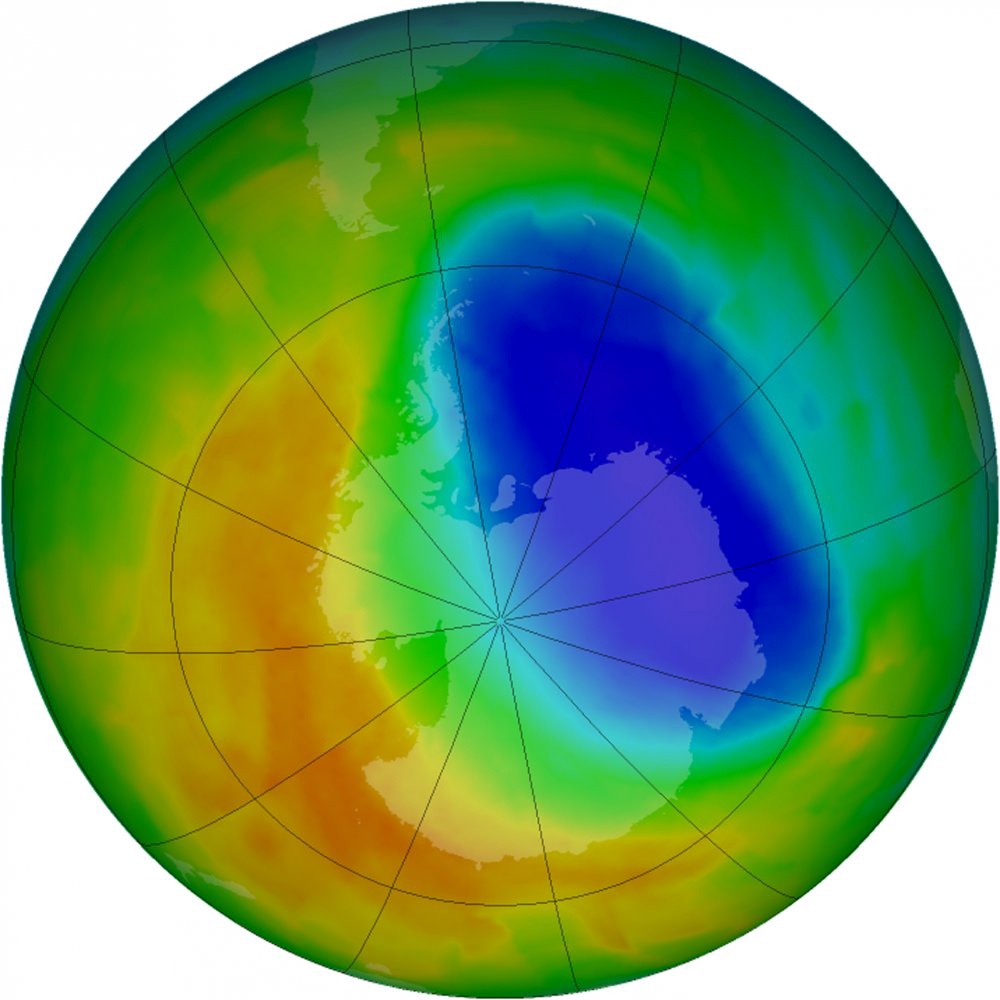
The seasonal hole in the ozone layer above the Antarctic this year was the second smallest in two decades, but still covered an area roughly the size of North America, AFP reports according to the US experts. The average size of the Earth's protective shield was 6.9 million square miles (17.9 million square kilometers), according to satellite measurements by the National Oceanic and Atmospheric Administration and US space agency NASA. "It happened to be a bit warmer this year high in the atmosphere above Antarctica, and that meant we didn't see quite as much ozone depletion as we saw last year, when it was colder," said Jim Butler of NOAA's Earth System Research Laboratory in the Colorado city of Boulder. The Antarctic ozone hole, which forms in September and October, reached its largest size for the season -- 8.2 million square miles, roughly the combined area of the United States, Mexico and Canada -- on September 22, NOAA said. In comparison, the largest ozone hole recorded to date was one of 11.5 million square miles in the year 2000. The ozone layer -- which helps protect the Earth from potentially dangerous ultraviolet rays that can cause skin cancer and cataracts -- began developing holes on an annual basis starting in the 1980s due to chlorofluorocarbons, or CFCs. CFCs, once commonly used in refrigerators and aerosol cans, now are almost non-existent thanks to an international treaty signed on September 16, 1987, amid global concern over widening holes in the ozone layer. Still, it could take another decade before scientists detect early signs that the ozone over the Antarctic is returning, NOAA said. The ozone layer above Antarctica likely will not return to its early 1980s state until about 2060, according to NASA scientist Paul Newman.





The seasonal hole in the ozone layer above the Antarctic this year was the second smallest in two decades, but still covered an area roughly the size of North America, AFP reports according to the US experts.
The average size of the Earth's protective shield was 6.9 million square miles (17.9 million square kilometers), according to satellite measurements by the National Oceanic and Atmospheric Administration and US space agency NASA.
"It happened to be a bit warmer this year high in the atmosphere above Antarctica, and that meant we didn't see quite as much ozone depletion as we saw last year, when it was colder," said Jim Butler of NOAA's Earth System Research Laboratory in the Colorado city of Boulder.
The Antarctic ozone hole, which forms in September and October, reached its largest size for the season -- 8.2 million square miles, roughly the combined area of the United States, Mexico and Canada -- on September 22, NOAA said.
In comparison, the largest ozone hole recorded to date was one of 11.5 million square miles in the year 2000.
The ozone layer -- which helps protect the Earth from potentially dangerous ultraviolet rays that can cause skin cancer and cataracts -- began developing holes on an annual basis starting in the 1980s due to chlorofluorocarbons, or CFCs.
CFCs, once commonly used in refrigerators and aerosol cans, now are almost non-existent thanks to an international treaty signed on September 16, 1987, amid global concern over widening holes in the ozone layer.
Still, it could take another decade before scientists detect early signs that the ozone over the Antarctic is returning, NOAA said.
The ozone layer above Antarctica likely will not return to its early 1980s state until about 2060, according to NASA scientist Paul Newman.


 +7 (777) 001 44 99
+7 (777) 001 44 99















































